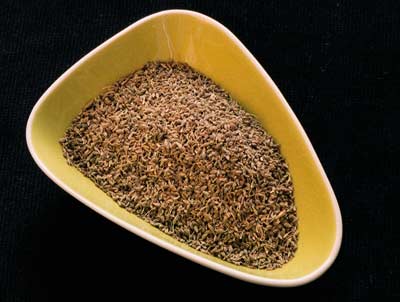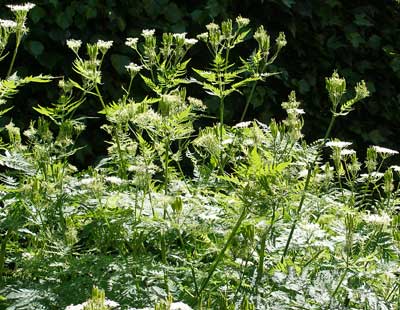
Aniseed or sweet cumin is a plant with bright green leaves which produces aniseed or sweet cumin used in confectionary and liqueurs. It is an annual umbelliferous plant native to the Eastern Mediterranean, with red aromatic seeds with a slight liquorice flavour. The seeds resemble fennel seeds, which can be substituted. The chopped leaves can be used to flavour soups and salads. In India seeds are chewed after meals to sweeten the breath and aid the digestion. In many Western countries it is also a small aniseed sweet or an aniseed-flavoured apéritif, usually taken with water (e.g. Pernod).
The aniseed fullen cap mushroom has a distincive pale blue colour of young specimens soon fading towards light grey. A couple of these will impart an almost liquorice flavour to a dish. Certainly not many are required but is a food addition to soups and stews. (If gathering mushrooms you must be absolutely certain what you have before you eat them as many are very poisonous.)
The aniseed funnel cap. This mushroom has a distincive pale blue colour of young specimens soon fading towards light grey. A couple of these will impart an almost liquorice flavour to a dish. Certainly not many are required but is a food addition to soups and stews.

Sweet cicely. The seeds are long, up to a foot, ridged and black with an aniseed flavour. They can be used in salads when young or as a spice as they grow older. The fern-like leaves have a smell reminiscent of myrrh and aniseed and can be added to soups, omelettes, drinks and liquors. The fruits, collected before they ripen and then dried, can be used to give meats a liquorice-like flavour, and the roots can be used as a vegetable.